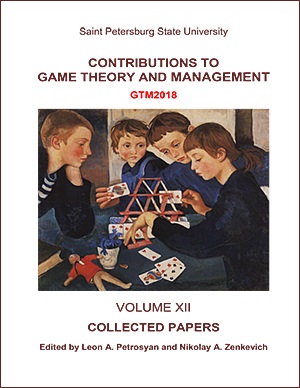Two-Stage Network Formation Game with Heterogeneous Players and Private Information
Abstract
We consider a two-stage network formation game with heterogeneous players and private information. The player set consists of a leader and a finite number of other common players, which are divided into two types, passive and positive players. At the first stage, the leader suggests a connected communication network for all players to join. While it is assumed that the link information which every common player receives from the leader is private. Based on the private information, every player chooses the action, accept or reject, at the second stage. A network is formed finally. We show the existence of subgame perfect Nash equilibrium in the game. The result is illustrated by an example.
Keywords:
heterogeneous players, private information, Myerson value, subgame perfect Nash equilibrium
Downloads
References
Downloads
Published
How to Cite
Issue
Section
License
Articles of "Contributions to Game Theory and Management" are open access distributed under the terms of the License Agreement with Saint Petersburg State University, which permits to the authors unrestricted distribution and self-archiving free of charge.




